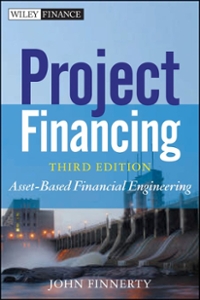Question
The yield on a three-month T-bill is 4%, the yield on a 10-year T-bond is 5.36%. the market risk premium is 10.18%. and the Allen
The yield on a three-month T-bill is 4%, the yield on a 10-year T-bond is 5.36%. the market risk premium is 10.18%. and the Allen Company has a beta of 1.25. Using the Capital Asset Pricing Model (CAPM) approach, Allens cost of equity is _______(21.708%, 16.28%, 18.99%, 18.09%).
The cost of equity using the bond yield plus risk premium approach
In contrast, the Hoover Company is closely held and, therefore, cannot generate reliable inputs with which to apply the CAPM method to estimate its cost of internal equity (retained earnings). However, its management knows that its outstanding bonds are currently yielding 12.31%, and the firms analysts estimate that the risk premium of its stocks over its bonds is currently 2.31%. As result, Hoovers cost of internal equity (rss)based on the own-bond-yield-plus-judgemental-risk-premium approachis:
18.27%
13.89%
16.08%
14.62%
The cost of equity using the discounted cash flow (or dividend-yield-plus-growth-rate) approach
Johnson Enterprisess stock is currently selling for $19.50 per share, and the firm expects its per-share dividend to be $3.25 in one year. Analysts project the firms growth rate to be constant at 5.40%. Using the discounted cash flow (or dividend-yield-plus-growth-rate) approach, what is Johnsons cost of internal equity?
22.07%
23.17%
20.97%
29.79%
Estimating growth rates
It is often difficult to estimate the expected future dividend growth rate for use in estimating the cost of existing equity using the DCF (or dividend-yield-plus-growth-rate) approach. In general, there are three available methods to generate such an estimate:
| Carry forward a historical realized growth rate, and apply it to the future. | |
| Locate and apply an expected future growth rate prepared and published by security analysts. | |
| Use the retention growth model. |
Suppose Johnson Enterprisess is currently distributing 40% of its earnings as cash dividends. It has also historically generated an average return on equity (ROE) of 15.50%. It is reasonable to estimate Johnsons growth rate is ______(75.5%, 9.30%, 16.10%, 14.90%).
Step by Step Solution
There are 3 Steps involved in it
Step: 1

Get Instant Access to Expert-Tailored Solutions
See step-by-step solutions with expert insights and AI powered tools for academic success
Step: 2

Step: 3

Ace Your Homework with AI
Get the answers you need in no time with our AI-driven, step-by-step assistance
Get Started


